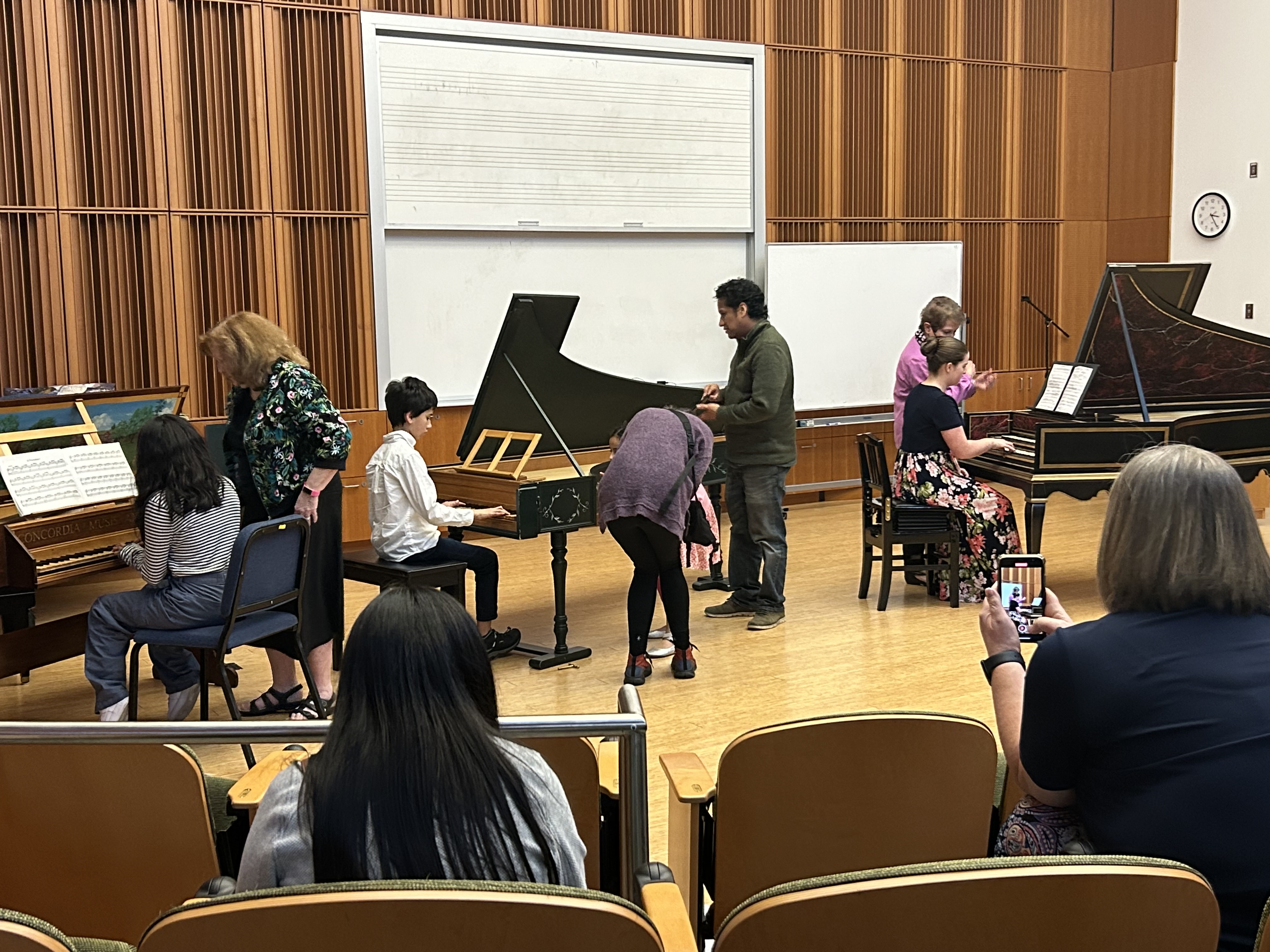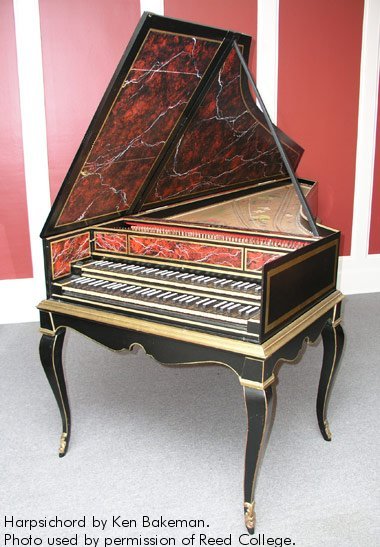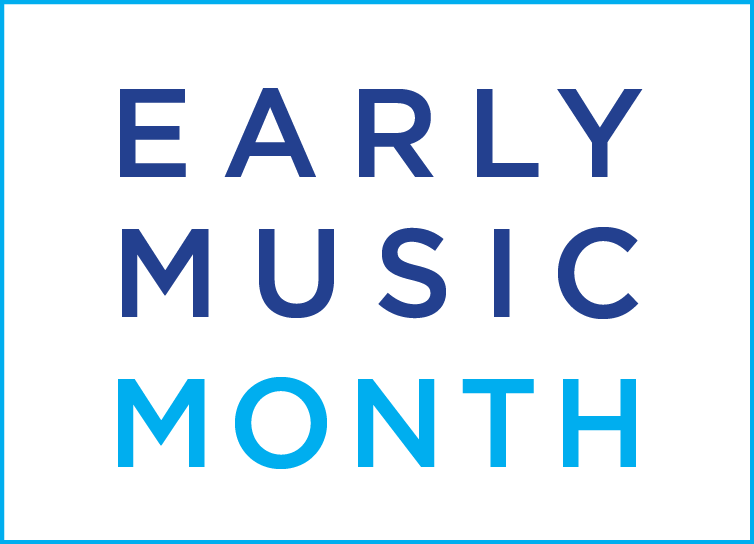Review of “Bach and the Music that Influenced Him“
A Live Recital – March 18, 2023 at 2pm, Reed College, Portland Oregon
Also Available Online – March 25, 2023 at 2pm on the WEKA YouTube Channel

Review by Carol lei Breckenridge
Harpsichordist Ian Pritchard, on the faculty of the Colburn School Conservatory of Music, presented a recital for WEKA on March 18, 2023, at Reed College that centered around the music of Johann Sebastian Bach and some precursors from various international styles – Buxtehude, Reincken, Lully, and Vivaldi — that were an influence on the emerging composer. Pritchard’s command of style, expression, and harpsichord touch was satisfyingly masterful, thoughtful, and nuanced. The Bach works were all fairly early compositions, from the composer’s 20’s or 30’s.
Two harpsichords were used for the program – an Italian by Owen Daly, and a French double by Kenneth Bakeman – both from the Reed College early keyboard collection, and meticulously maintained, tuned, and voiced by Paul Irvin, Curator of the collection. The beauty of tone of these two instruments provided the foundation for expressiveness that Ian conveyed. Due to temperaments, Ian chose the Italian for works in sharp keys, and the French for flat key compositions, regardless of the composition’s international origin. In actuality, the tone of each harpsichord was simply beautiful, and not so dissimilar, defying some modern assumptions that there is a great divide in tone quality between Italian and French instruments.
Ian Pritchard has a long history with harpsichord, having begun playing the instrument at the age of 13, and studying with several important harpsichord teachers, including at Oberlin Conservatory and in Europe. Earning a PhD in musicology from the University of Southern California, his musicological expertise was evident through his program.
The recital opened with Bach’s Chromatic Fantasy and Fugue (written in 1720, with later revisions), which Pritchard played in a lesser-known edition. The Fantasy was given an improvisatory feeling throughout, with flexibility of rhythm and dramatic changes of mood. Ian added bass octaves at times, of which we assume Bach would have approved, considering his devotion to the organ.
The next three compositions were played as a set, and were taken from the Möller manuscript, compiled by Bach’s eldest brother, Johann Christoph, with whom Johann Sebastian lived after his parents died when he was 10 years old. Dietrich Buxtehude’s Toccata in G was played sweetly, with freedom within the phrases.
In Jan Adam Reincken’s Suite in G, Pritchard brought out lyrical and at times deeply meditative qualities, especially in the Allemande and Sarabande. The Gigue was played with more “bite,” through rapid touch and simultaneous chordal tones.
Jean-Baptiste Lully’s Ciaconne di M. Lully offered opportunity for beautifully varied touch and affekts, as well as a typical French hypnotic effect.
Antonio Vivaldi’s Concerto in B Minor, originally for solo violin and orchestra, was transcribed by J.S. Bach when he was still in Weimar (up until his 32nd year), and shows the influence of the Italian concerto and operatic style. A highly dramatic work, Pritchard brought out tremendous contrast between sections, moving from orchestral-like flourishes, introspection, and exciting – at times, even manic — string figures.
After the intermission, Ian returned to compositions by J.S. Bach, beginning with the very early Capriccio on the Departure of his Most Beloved Brother, written in 1706, when the composer was but 21 years old. This unusually programmatic keyboard piece, possibly influenced by Kuhnau’s Biblical Sonatas, contains short movements, each with a descriptive title. Ian achieved the effect of nuanced dynamics through flexible rhythms, very appropriate for a piece quite possibly composed on a clavichord.
The final work on the program was a true highlight for this reviewer: Bach’s French Suite No. 1, one of the opening pieces in the Anna Magdalena Bach Clavier book of 1722. A rather simple suite in structure, containing only 5 movements, Ian’s sense of phrasing conveyed movement and flow through highly nuanced articulation and flexible rhythms. The Sarabande was especially beautiful and lyrical, with resonant, singing tones. The expressiveness of this movement was heightened through Ian’s slight lingering on especially poignant treble tones. The Gigue, with dramatic dotted rhythms, was played with an incisive touch.
If you missed this excellent recital, a video is available on the WEKA YouTube channel.
Ian is on the faculty at Colburn School Conservatory of Music in Los Angeles. His new JS Bach CD will be released soon. In addition to Bach, Ian works extensively in early Italian keyboard music and intavolatura. Listen to examples of Ian’s playing on YouTube.
WEKA Helps Youngsters Explore the Harpsichord
As for all our events, guests have an opportunity to ask questions of the performer and try the recital instruments. At this event, a special demonstration of the harpsichord and its construction and action was offered. Keyboard instructors and students were especially invited, and the youngsters enjoyed trying out the instruments.


About Live Performances at Reed College
Performing Arts Building, room 320. Directions
WEKA gratefully thanks Reed College for the use of instruments from their Early Keyboard Collection assembled by Bonnie Garrett during thirty years of instruction there.
Admission
Free to WEKA members.
Free to Reed College faculty, students and staff.
Free to college students with ID and younger students. Children must be accompanied by an adult.
Regular admission $25.
Payable at the door with cash or check.
Flyer for this Event
Handout: Introduction to the Harpsichord
Printable Program
MARCH is #Early Music Month!
Welcome to this Early Music Month Event
